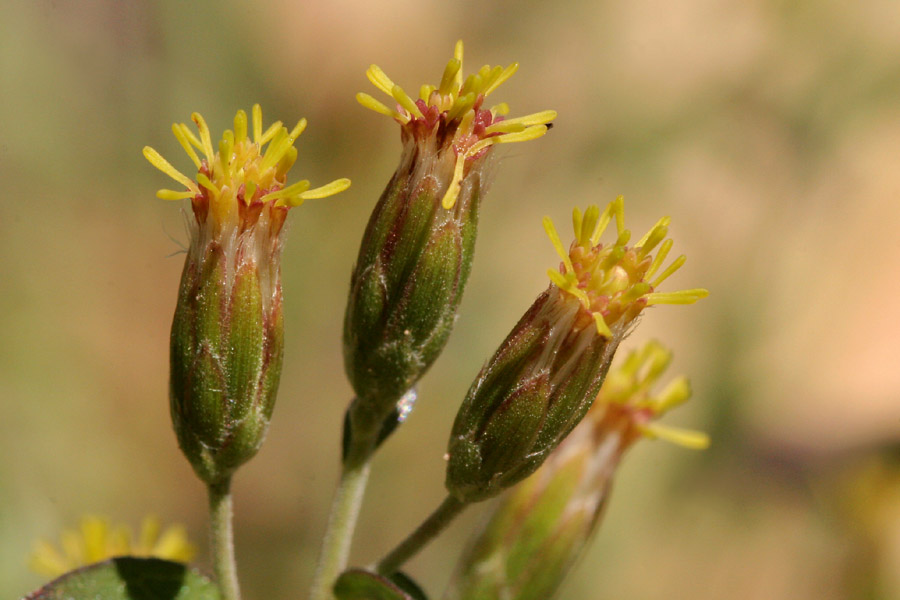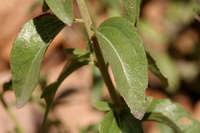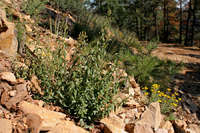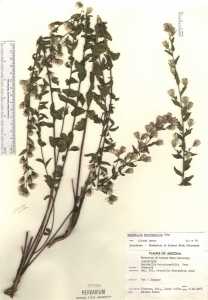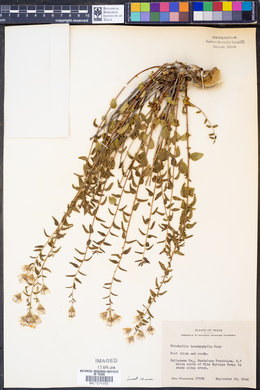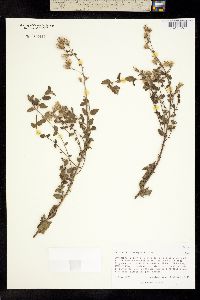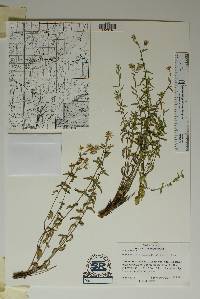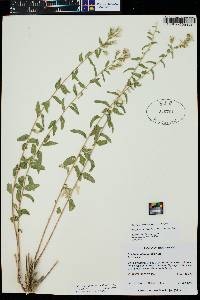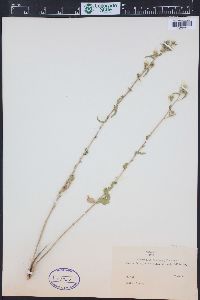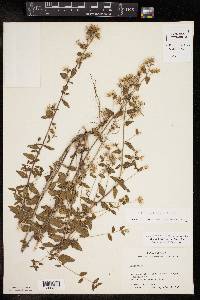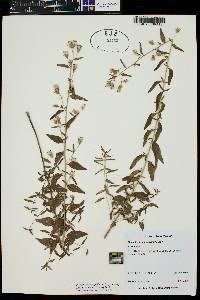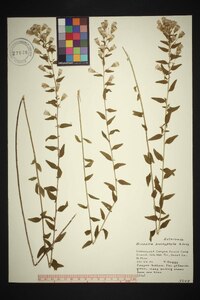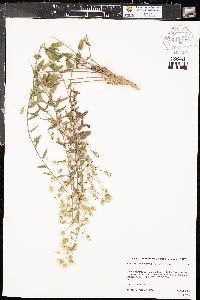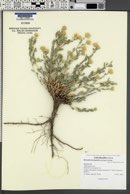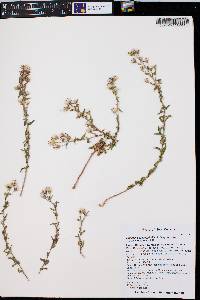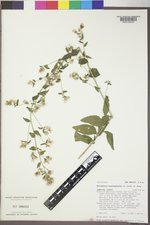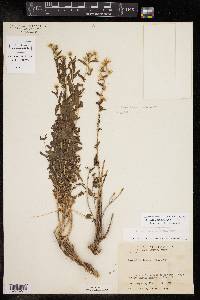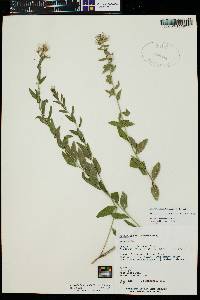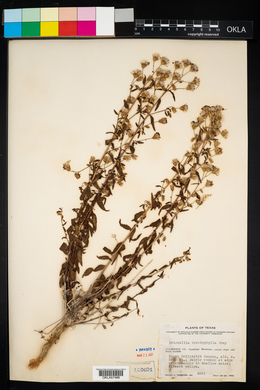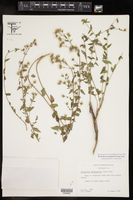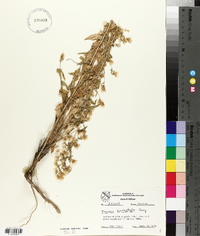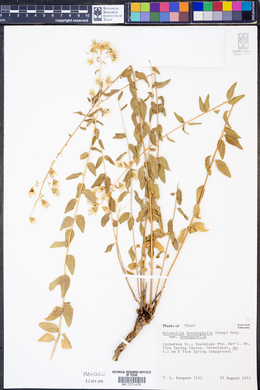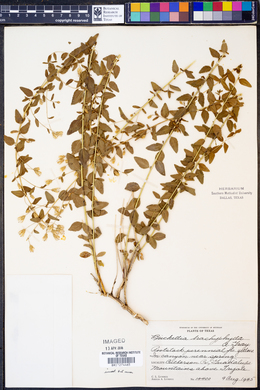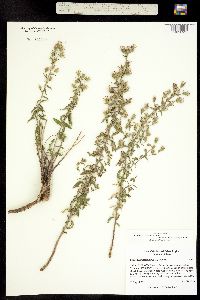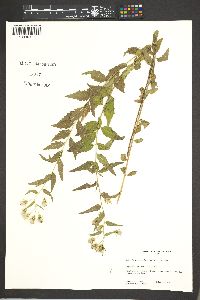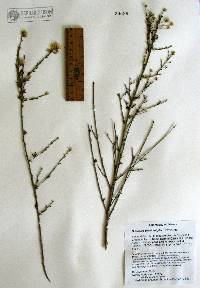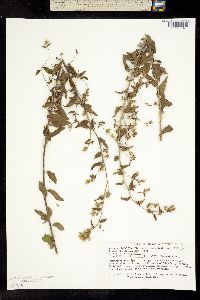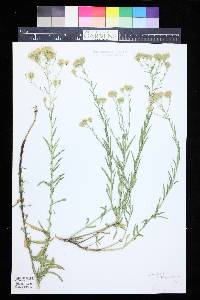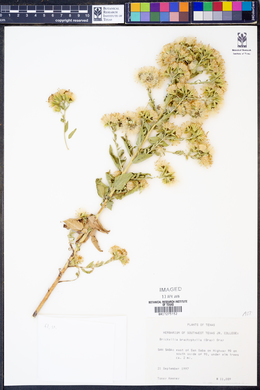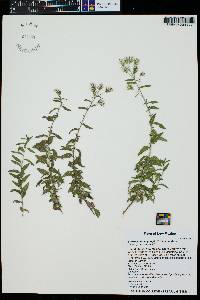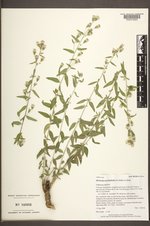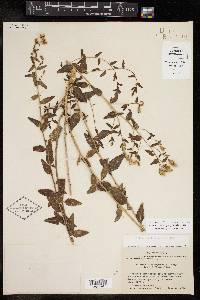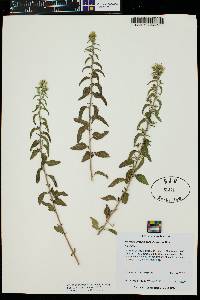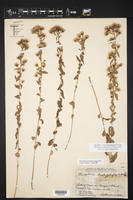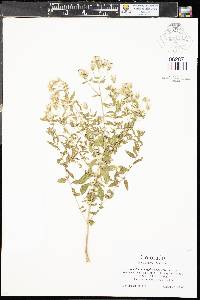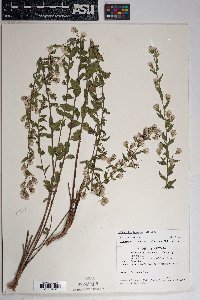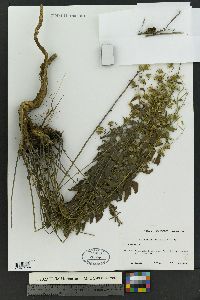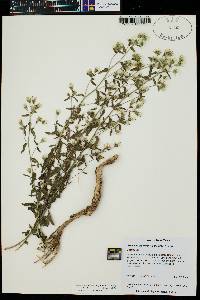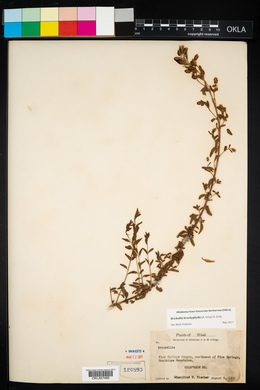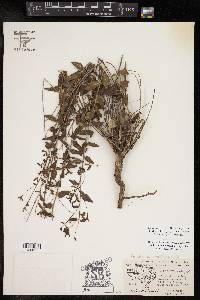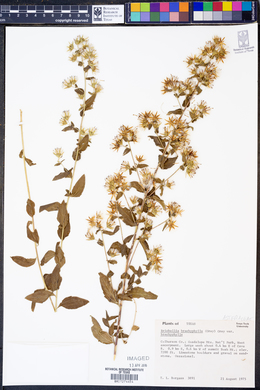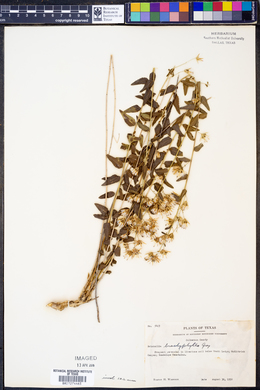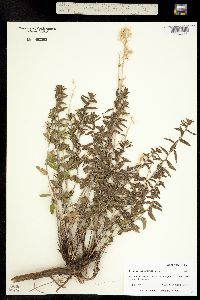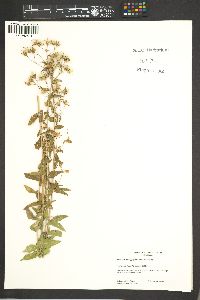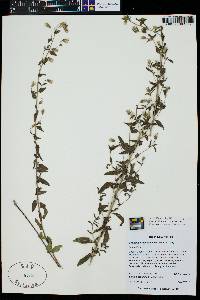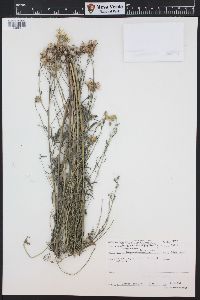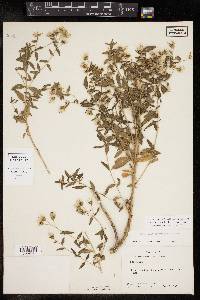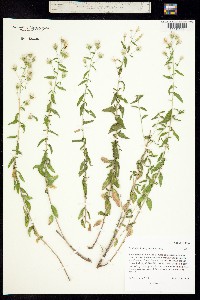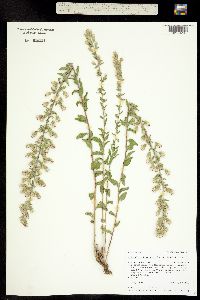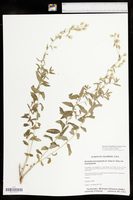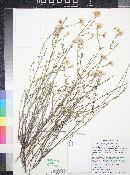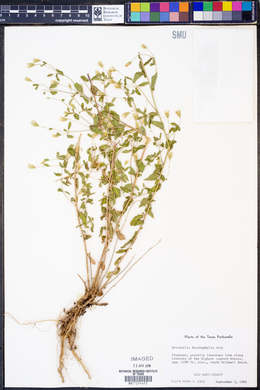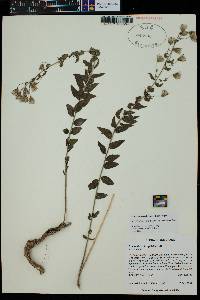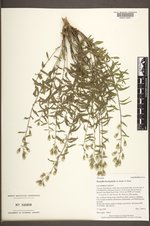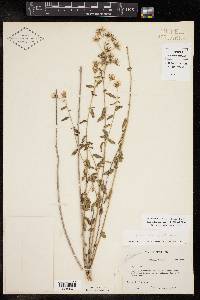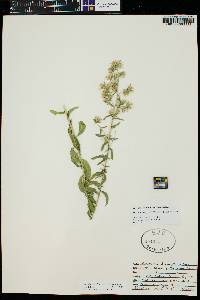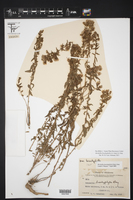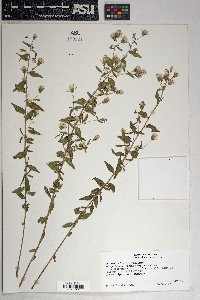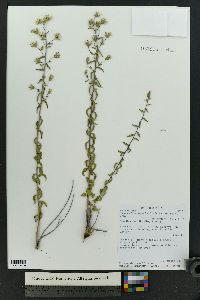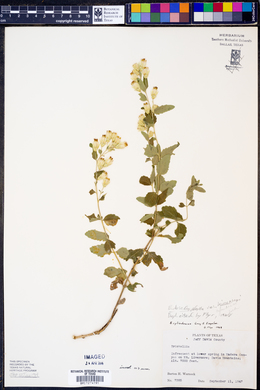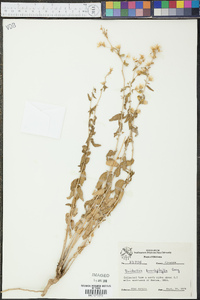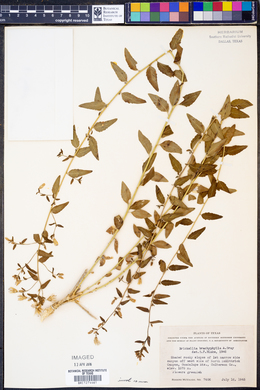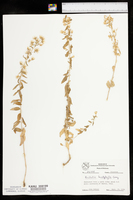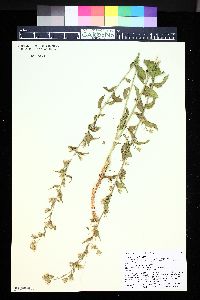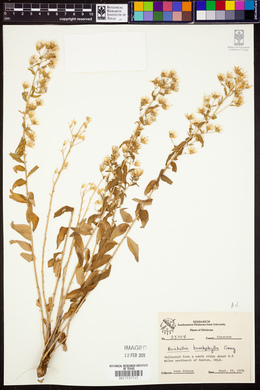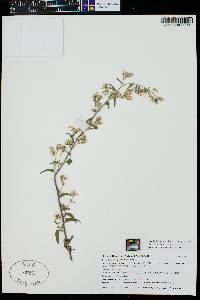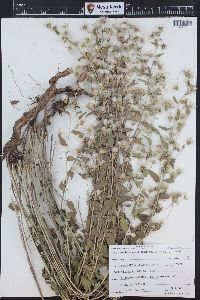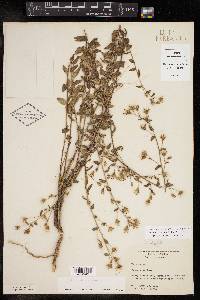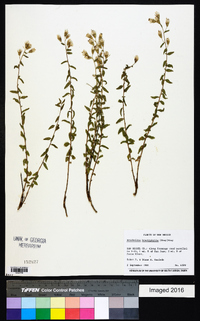
|
|
|
|
Family: Asteraceae
Plumed Brickellbush, more...Brach brickellbush
[Clavigera brachyphylla A. Gray] |
Perennials, 30-100 cm (caudices woody). Stems branched, pubescent. Leaves mostly alternate (sometimes subopposite); petioles 0-3 mm; blades 3-nerved from bases, lanceolate or lance-ovate, 10-50 × 4-20 mm, bases acute to obtuse, margins serrate or entire, apices acute, faces sparsely to densely pubescent, often gland-dotted or stipitate-glandular. Heads usually in open, racemiform or paniculiform arrays, rarely borne singly. Peduncles 4-20 mm, pubescent. Involucres cylindric to campanulate, 8-11 mm. Phyllaries 15-20 in 4-5 series, greenish, often purple-tinged, 5-9-striate, unequal, margins narrowly scarious (often ciliate, apices acute to acuminate or subaristate); outer lance-ovate (often puberulent), inner narrowly lanceolate (glabrous). Florets 9-12; corollas pale yellow-green, often purple-tinged, 4.5-6 mm. Cypselae 2.5-5.3 mm, mostly velutinous, sometimes pubescent; pappi of 27-32 white, usually plumose, rarely barbellate, bristles. 2n = 18. Flowering Jul-Oct. Limestone cliffs, rhyolitic rock, rocky ridges, canyon walls, hillsides; 1400-2400 m; Ariz., Colo., Kans., N.Mex., Tex. FNA 2006, Martin and Hutchins 1980 Duration: Perennial Nativity: Native Lifeform: Subshrub General: Perennial herbs, 30-100 cm tall, often from a woody caudex; stems simple to branched, pubescent. Leaves: Mostly alternate, sometimes subopposite, sessile or on short petioles to 3 mm; blades 3-nerved from bases, lanceolate to lance-ovate, 1-5 cm long by 4-20 mm wide, bases acute to obtuse, apices acute, margins serrate or entire, faces sparsely to densely pubescent, often gland-dotted or stipitate-glandular. Flowers: Flower heads discoid, arranged in open elongate racemes or panicles, rarely borne singly, on pubescent peduncles, 4-20 mm long; involucre (ring of bracts wrapped around flower head) cylindric to campanulate, 8-11 mm high, the bracts (phyllaries) 15-20 in 4-5 series, greenish, often purple-tinged, 5-9 striate, unequal, margins narrowly scarious and often ciliate; florets 9-12, all discs, the corollas pale yellow-green, often purple-tinged, 4-6 mm. Fruits: Achenes 3 mm long, mostly velutinous, sometimes pubescent, topped with a pappus of 27-32 white, usually plumose bristles. Ecology: Found on limestone cliffs, rhyolitic rock, rocky ridges, canyon walls, hill slopes and in pine forests, from 4,500-8,000 ft (1372-2438 m); flowers July-October. Distribution: AZ, NM, CO, TX, KS Notes: Brickellia is a genus of shrubs and perennial herbs with all disc flowers, these usually white to cream colored; flower heads wrapped in several rows of bracts (phyllaries), the outer rows shorter than the inner rows; and 10-nerved seeds topped with white tufts of bristles. B. brachyphylla is distinguished by its pubescent stems, alternate or subopposite leaves, acuminate phyllary tips, and mostly plumose (feathery) pappus on the seeds (most other Brickellia spp have a pappus of barbed bristles). Distinguished from B. amplexicaule and B. betonifolia by its leaves which are usually alternate and do not have clasping bases. Ethnobotany: Root used as a disinfectant for prenatal -lizard infection- among the Ramah Navajo. Etymology: Brickellia is named for Dr. John Brickell (1749-1809), a botanist and physician in Georgia; brachyphylla means short-leaved. Synonyms: Brickellia brachyphylla var. brachyphylla, Clavigera brachyphylla Editor: SBuckley 2010, AHazelton 2015 |
This project was made possible in part by the Institute of Museum and Library Services [MG-70-19-0057-19].
Powered by Symbiota

